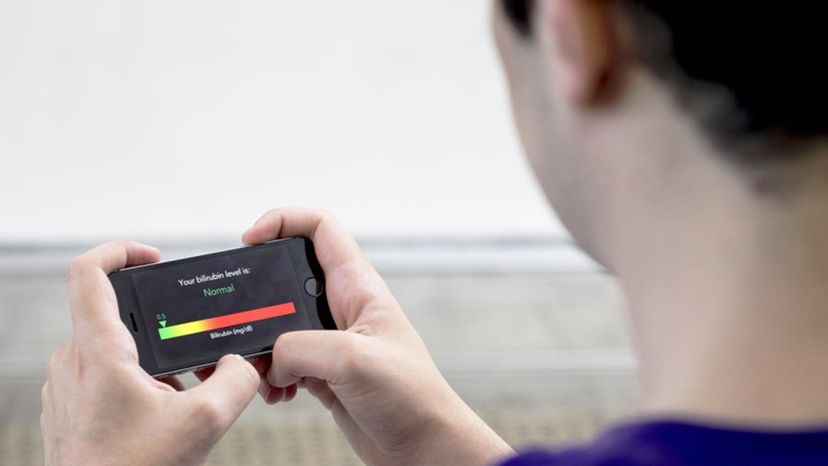 “The new BiliScreen app helps provide estimates of bilirubin levels in a person’s blood via selfies. Elevated levels can be an early warning sign for pancreatic cancer, hepatitis and other diseases. Dennis Wise/University of Washington
“The new BiliScreen app helps provide estimates of bilirubin levels in a person’s blood via selfies. Elevated levels can be an early warning sign for pancreatic cancer, hepatitis and other diseases. Dennis Wise/University of Washington
When the late Patrick Swayze was diagnosed with pancreatic cancer in 2008, he was given just a few months to live. His wife Lisa Swayze says he actually told her "I’m a dead man." Swayze’s short outlook was based on an average survival rate for people diagnosed with the disease. Swayze actually outlived that but not by much; he died 20 months after being diagnosed.
The survival rate for pancreatic cancer is so grim (for all stages combined the five-year rate is just 8 percent) because its symptoms typically don’t show up until the disease has spread beyond the pancreas. So once the cancer is found, it’s very difficult to cure. Surgery, radiation and chemotherapy are all options for treatment, but according to the American Cancer Society, they typically only extend survival and rarely cure the disease.
But a new smartphone app created by a team of University of Washington researchers is designed to help people screen for pancreatic cancer and other diseases by doing something they might already do — take a selfie. The app is described in a paper to be presented Sept. 13 at Ubicomp 2017, the Association for Computing Machinery’s International Joint Conference on Pervasive and Ubiquitous Computing.
One of the first symptoms for most people with pancreatic cancer is jaundice, a yellowing of the skin and eyes caused by an accumulation of bilirubin in the blood. Bilirubin is a substance in bile that is produced when the liver breaks down old red blood cells. Being able to detect even the slightest elevated level of bilirubin is key for people who are at high risk for pancreatic cancer. That’s where BiliScreen comes in. The app uses the camera of a smartphone plus computer vision algorithms and machine learning tools to spot the smallest increase in bilirubin levels in the sclera (whites of a person’s eye). The app can detect high levels of bilirubin before they can be seen with the naked eye.
The premise is pretty simple: Users snap a selfie with the BiliScreen app using the accompanying 3-D printed accessory — it controls outside light exposure — and the app calculates the color information from the sclera. That color info is then linked with bilirubin levels using the specific algorithms.
In the initial study of 70 people, the BiliScreen identified "cases of concern" 89.7 percent of the time when used with the 3-D box. "This relatively small initial study shows the technology has promise," co-author Dr. Jim Taylor, a professor in the UW Medicine Department of Pediatrics said in a statement. The next step is to begin testing the app on more people at risk for jaundice and other conditions, as well as to make more upgrades and improvements, including eliminating the need for the 3-D box.
Now That’s Cool
The University of Washington’s Ubiquitous Computing Lab also developed BiliCam, another smartphone app that screens for jaundice in newborns by taking a picture of a baby’s skin. A study in the journal Pediatrics showed BiliCam gave accurate estimates of bilirubin levels in 530 infants.














































